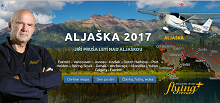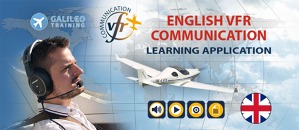Flying over Bering Strait as one of the greatest personal accomplishments
Alaska Expedition - Interview It’s unlikely that many GA pilots of have seen the Bering Strait, a place where Asia and America meet. Jiri Prusa included this wonderful experience in his portfolio of interesting flights during his Alaska expedition.
Flying Revue: Bering Strait was one of the highlights of your Alaska expedition in May 2017
Jiri Prusa: No doubt. It was a very special experience for me. Bering Strait is one of the Earth's absolute places. It connects Asia and America as we all learnt in geography lessons, but very few people have been there in person. Also, the combination a date borderline here; the Russia/USA border between the islands of Big Diomed (Russia) and Little Diomed (USA) add to the uniqueness of the area.
Alaska 2017 Expedition, Flight through Bering Strait
FR: How do you rate the expedition as a whole?
JP: I managed to accomplish my two main goals: to fly around and photograph the highest mountain of North America Denali and reaching the Bering Strait. Unfortunatelly I couldn’t fly over Aleutian Islands, but the weather was harsh and one of the local volcanoes just erupted, so I could not do that.

Little Diomede, USA
FR: You were basically at the end of the world ...
JP: There is a big difference between northern Alaska (Nome, Unalakleet, etc.) and Alaska’s southern parts. These are much more civilized. In the North, most people must provide for themselves, there is a lot of fishing and hunting, etc.; in the South there is a lifestyle close to mainland USA.
Transportation seems to be the main problem. There are comparatively only a few people living in Alaska and there are high mountains where roads cannot be built so many coastal cities have no connections to the rest of the world except for by sea for a couple of months in the year, and by air. Alaska, however, is much more expensive - fuel in the North, accommodation and food in all of Alaska.
FR: How about fuel availability?
JP: It is always necessary to check fuel availability in advance. Except one place, Bethel, where they wouldn’t sell fuel on Sundays although they had it, the information was always reliable.
FR: I know that usually only look for a place to stay upon your arrival so that you have the flexibility to decide where you’d like to land. Was there ever a situation you’d have to sleep in your plane?
JP: No, finding accommodation was not a problem on the route that I followed.
FR: How was the quality of the internet connection?
JP: It was better than I had expected. One problem was in Unalakleet, I could not upload videos and photos as the landlord had a limited connection. But overall it was good, it was sometimes worse in Australia.
FR: What about Alaska airports - quality of the runways, communication, services, fees?
JP: It is very different. There are lots of small airstrips where there is nothing. I used these for three of my landings. It was not very pleasant, because if the plane is not equipped with "bush" tires one may get surprised with soft sand surface or mud. At the several manned airports that I landed at everything was as elswhere in the USA - no airport charges, fuel available, communication professional.

Unalakleet resembles Siberian villages.
FR: Did you experience any difficult landings?
JP: Alaska is very windy which makes the landings often interesting.

Approach to Unalakleet airport.
FR: What was your experience with the people at the airports?
JP: They did not talk much, they provided services which I needed. There was a very pleasant lady in Cordova, a meteorologist, who gave me some materials about the area, and she also drove me to a local hotel.
FR: There is no autopilot in the Cessna 172 that you were using. How were you taking pictures?
JP: Yes, I had to work out a special technique. I managed to unlock both windows and I learned how to open both while piloting; the right window was a challenge as I still had to control the aircraft, but I learned how to do that, too.
I also got used to operating the camera with one hand while pilotning the aircraft with the other. The only problem I encountered was that in a 4 or 5-hour flight, my left hand was starting to hurt, as it was in the same rigid position for the entire time.
FR: How much did you have to change the planned route?
JP: I was not usually changing the route during flight. But in the evening before the flight, I adjusted the plan for the next stage based on the weather forecast. If I did not do that, I would probably not have managed to get to many places, or I would have been forced to fly in bad weather.
FR: Did you have any adrenalin experiences during this expedition?
JP: Yes, I was running out of fuel during my flight from Bethel to Unalakleet. Although I had the opportunity to land on several runways in the tundra, I wasn’t very clear how would I get out of there without fuel. But in the end everything worked out well; I made it to the airport at Unalakleet.
Thank you and I look forward to our next interview after your next flight expedition!
Jan Dvořák

The SAFE Guide app
VFR Communication
ATTEMPT TO FLY 3000 km WITHOUT LANDING
SkyDemon:
Prague Airport live:






















